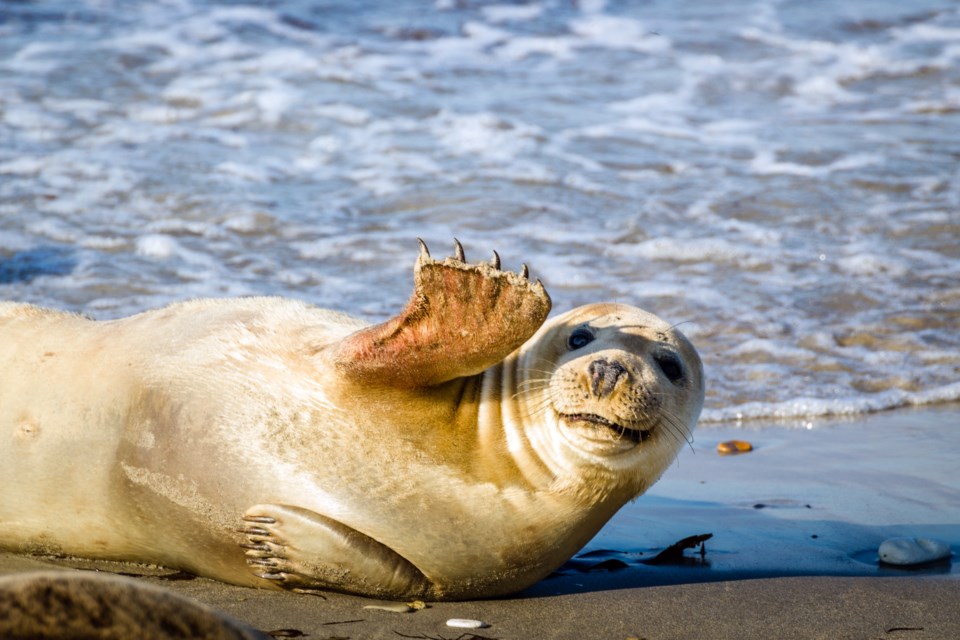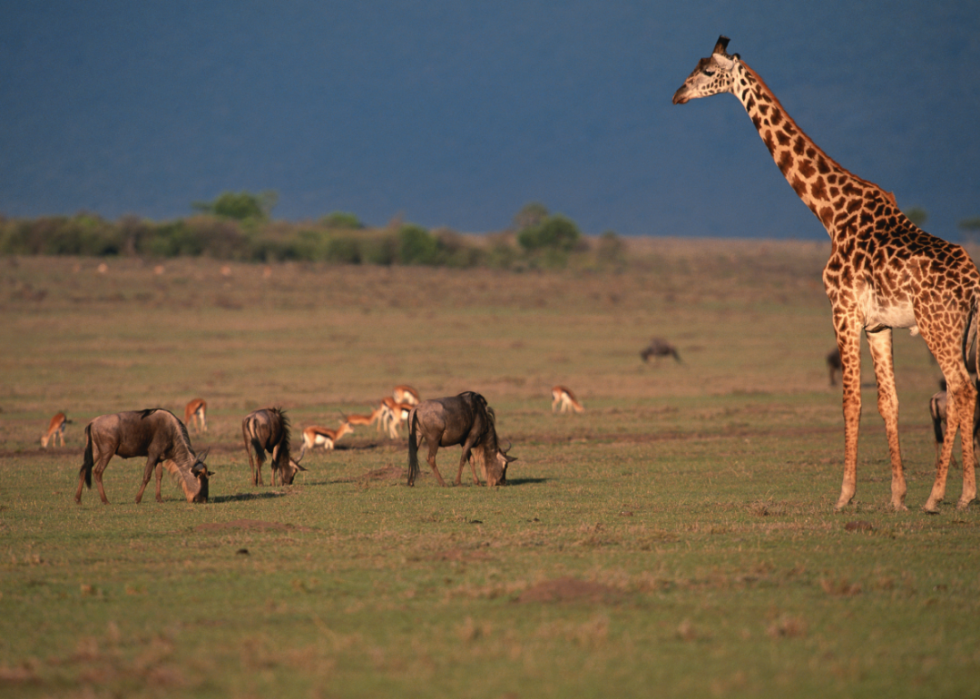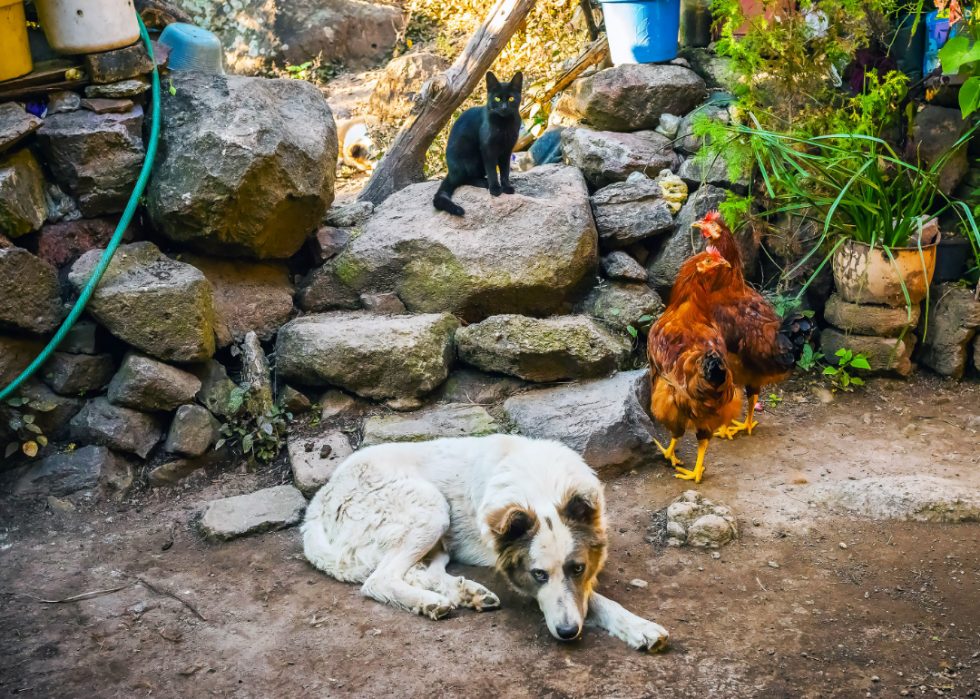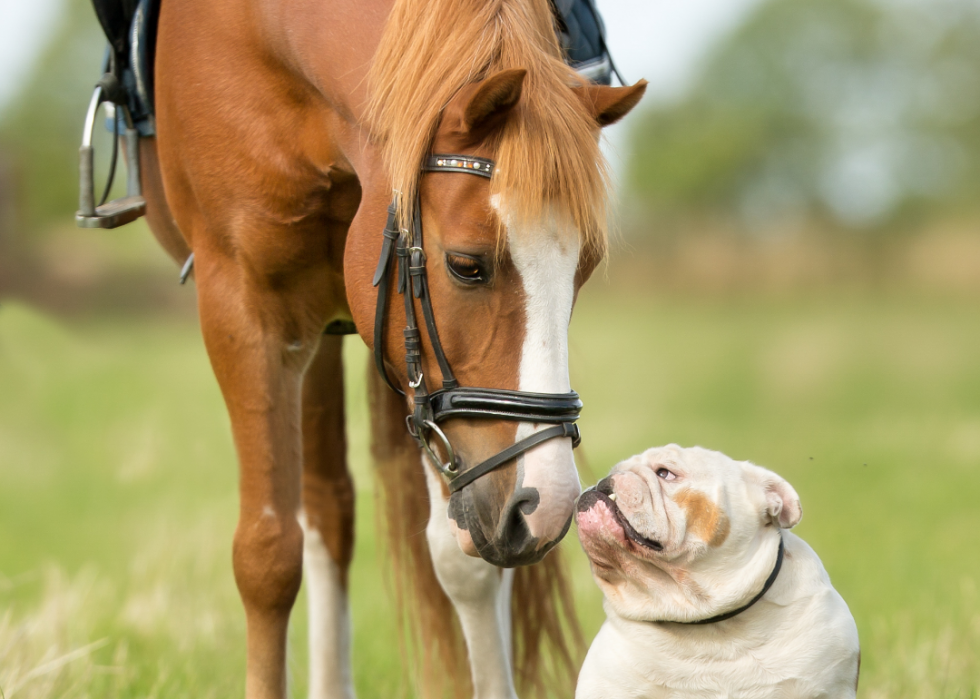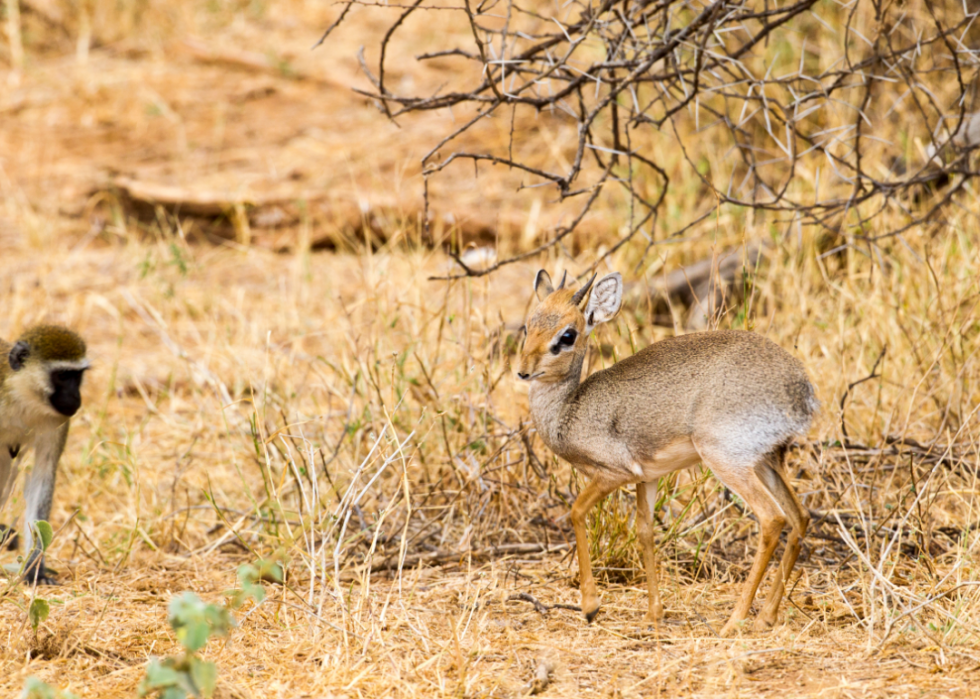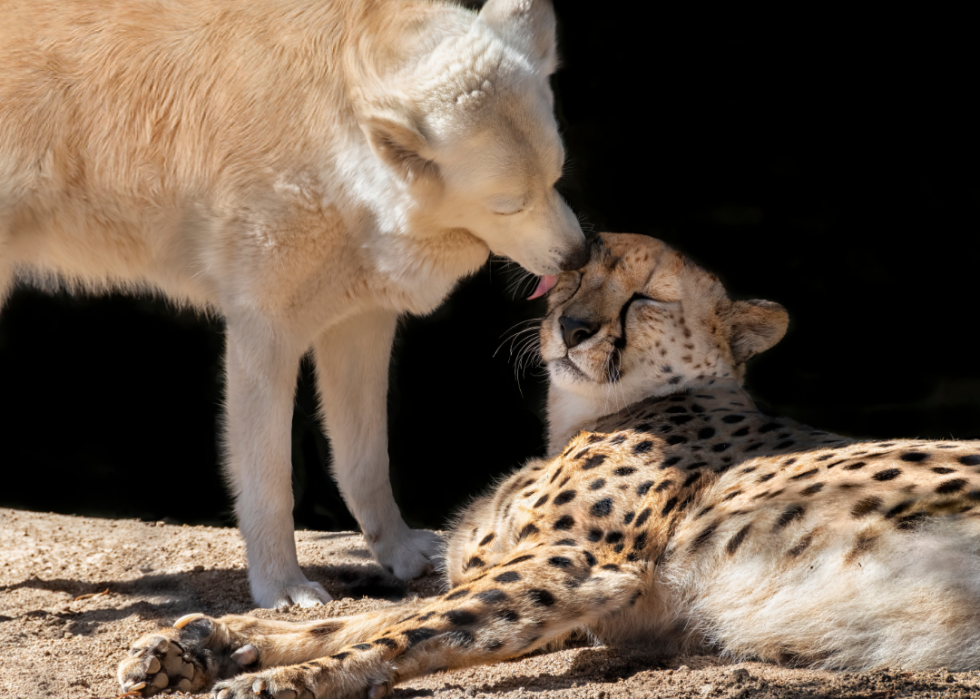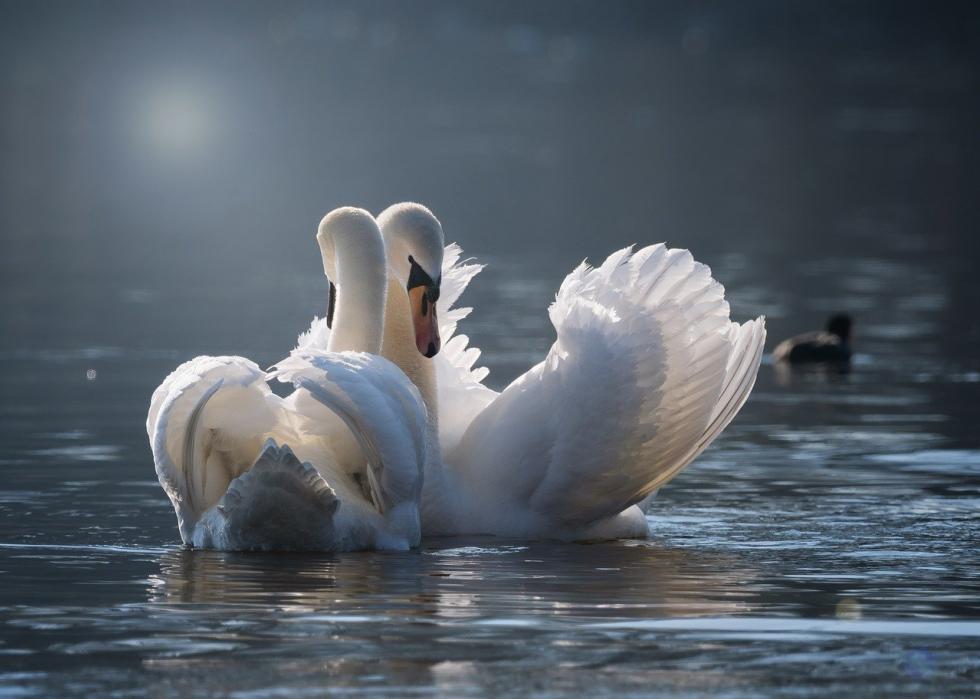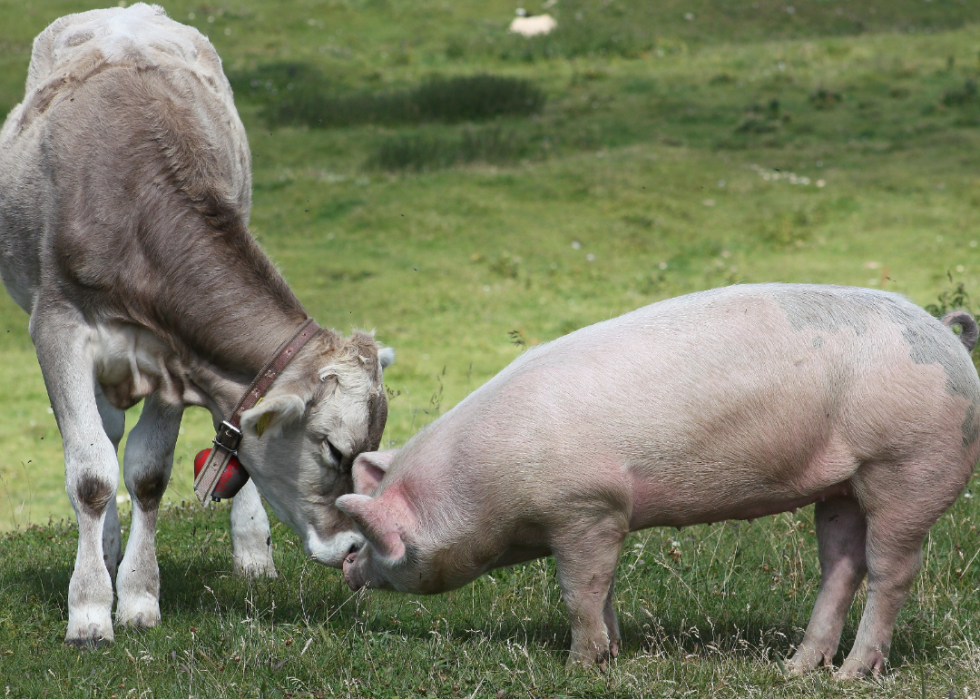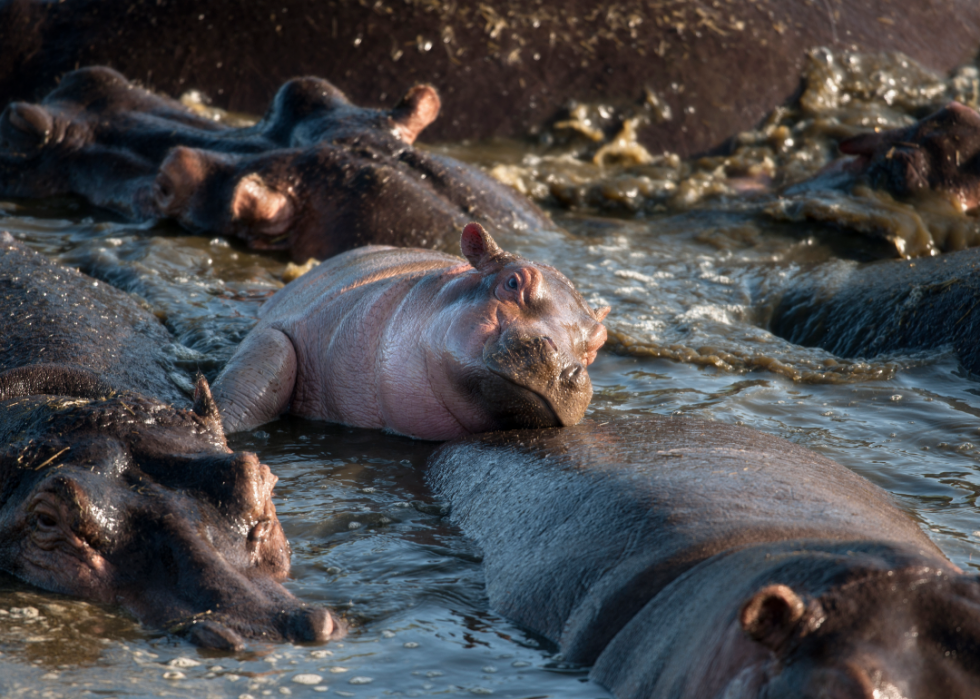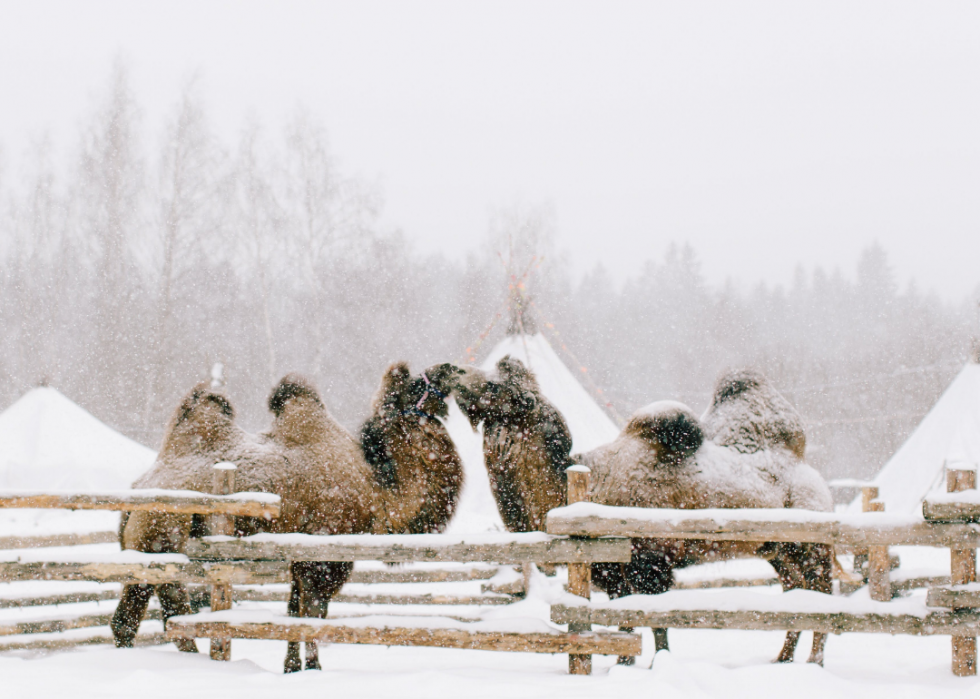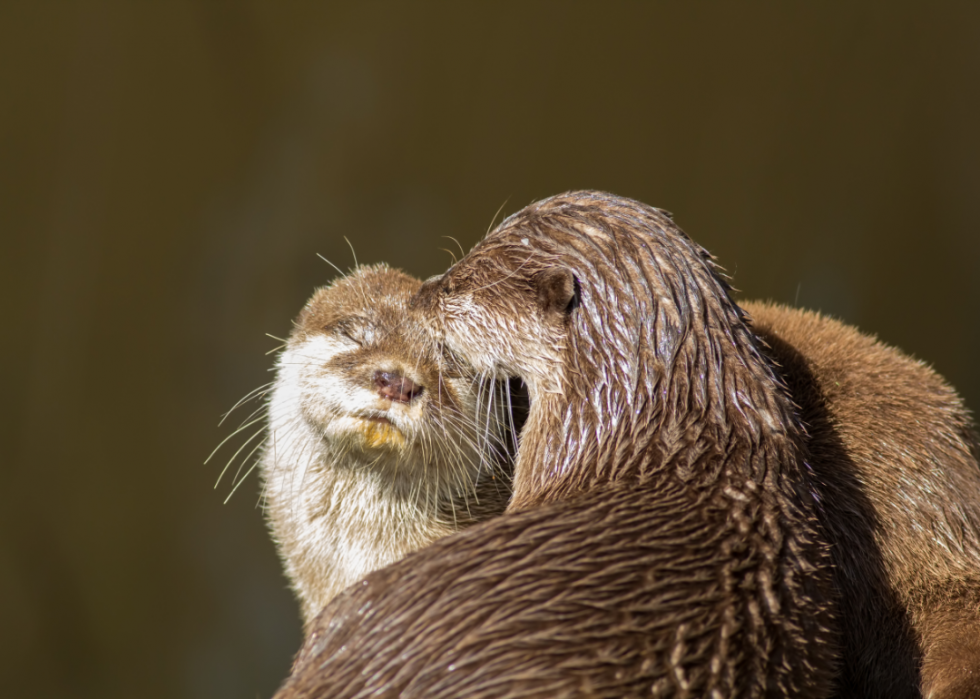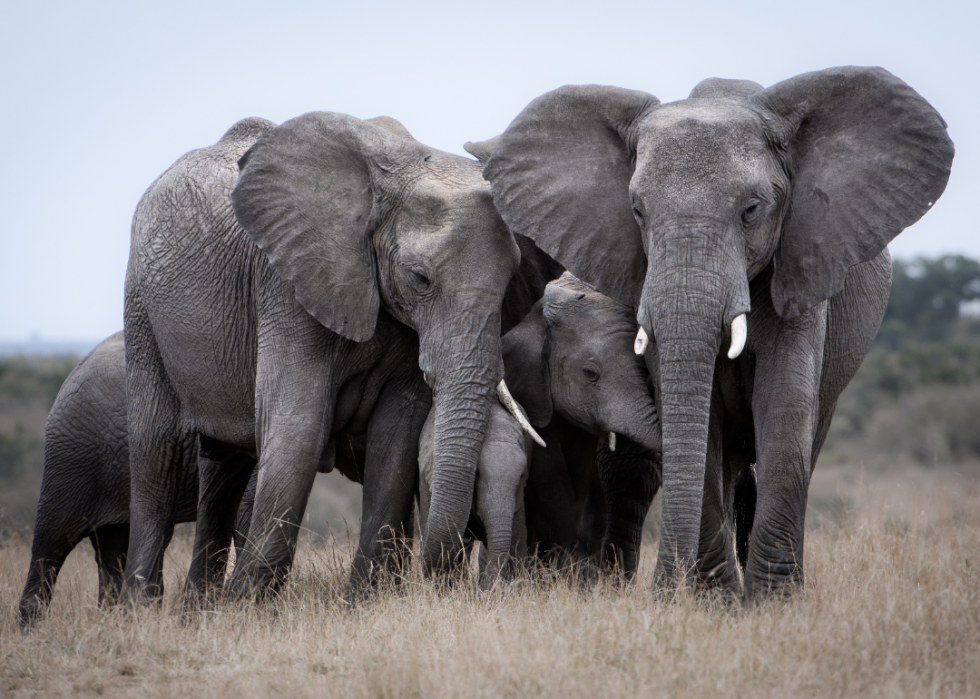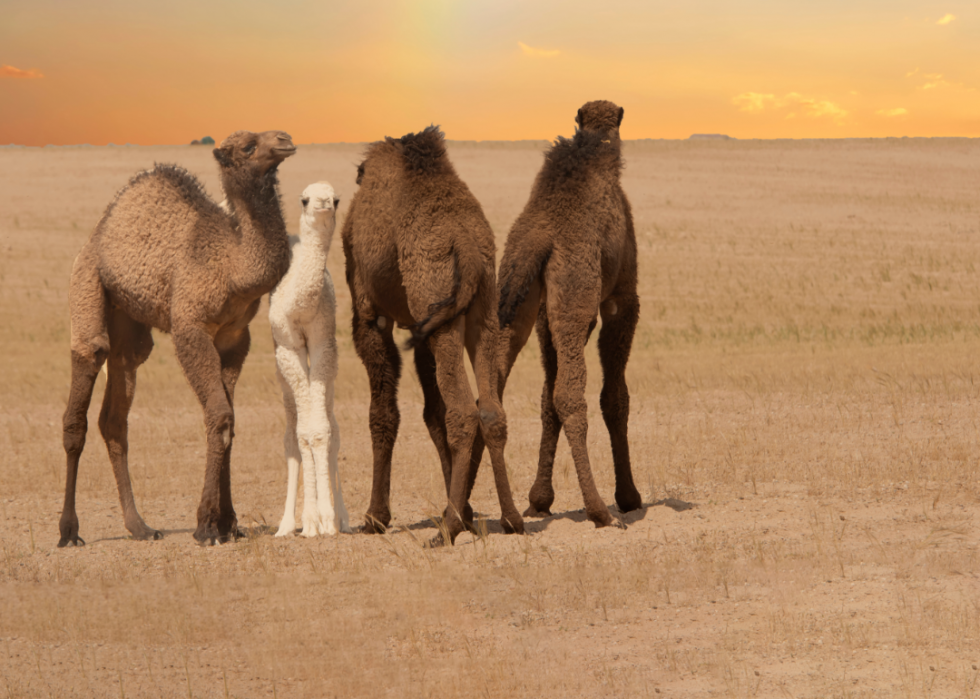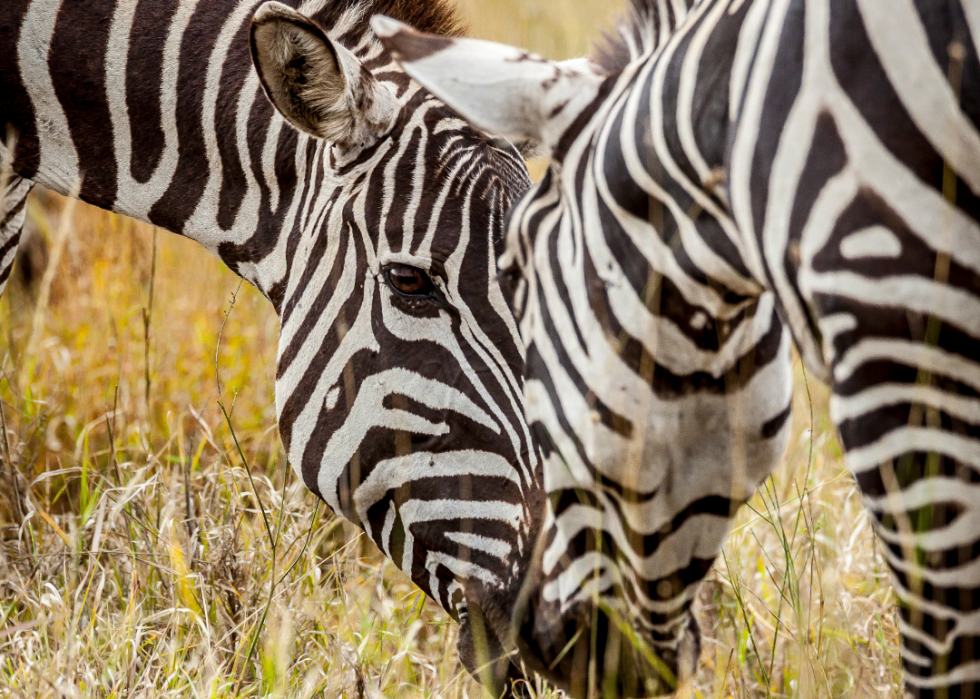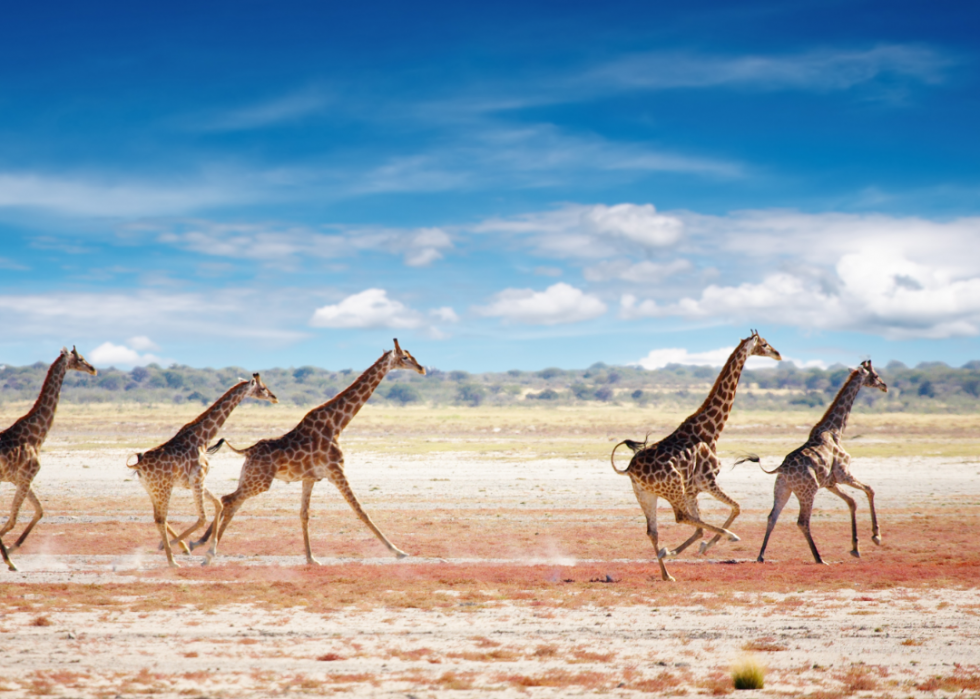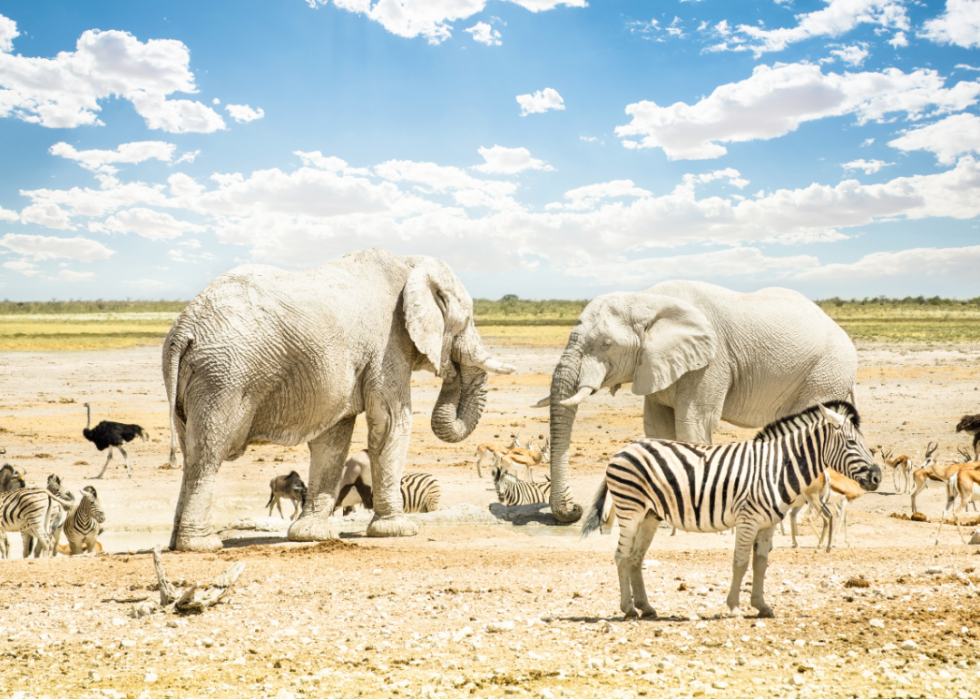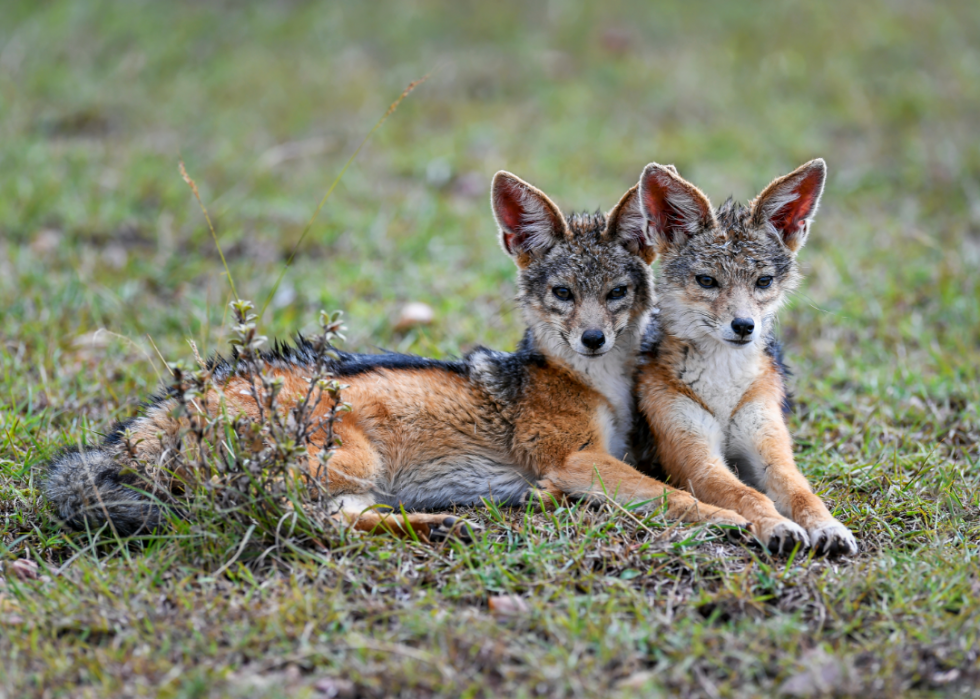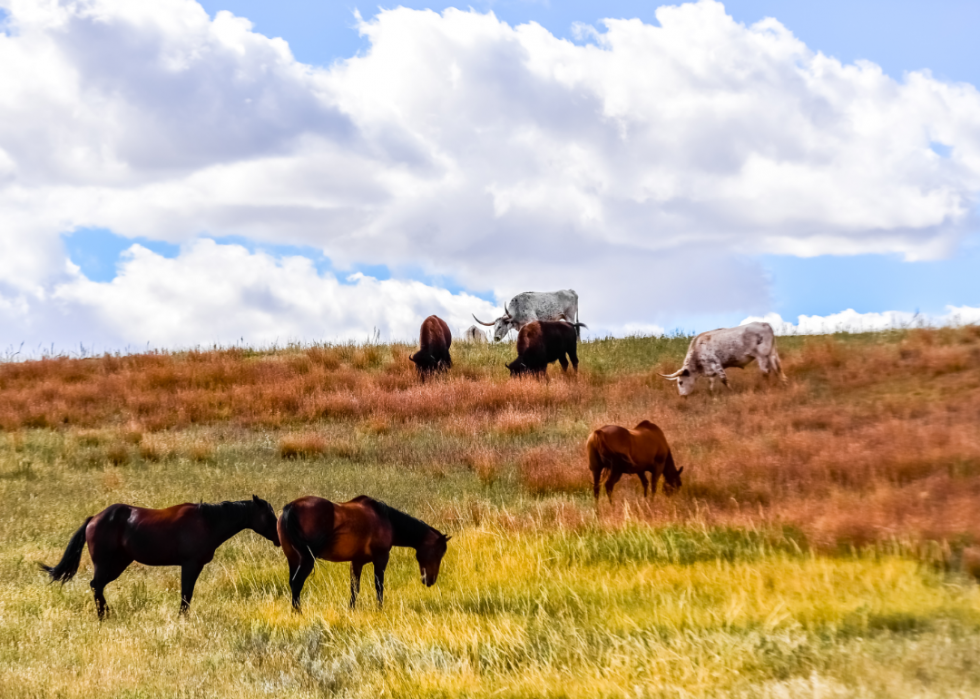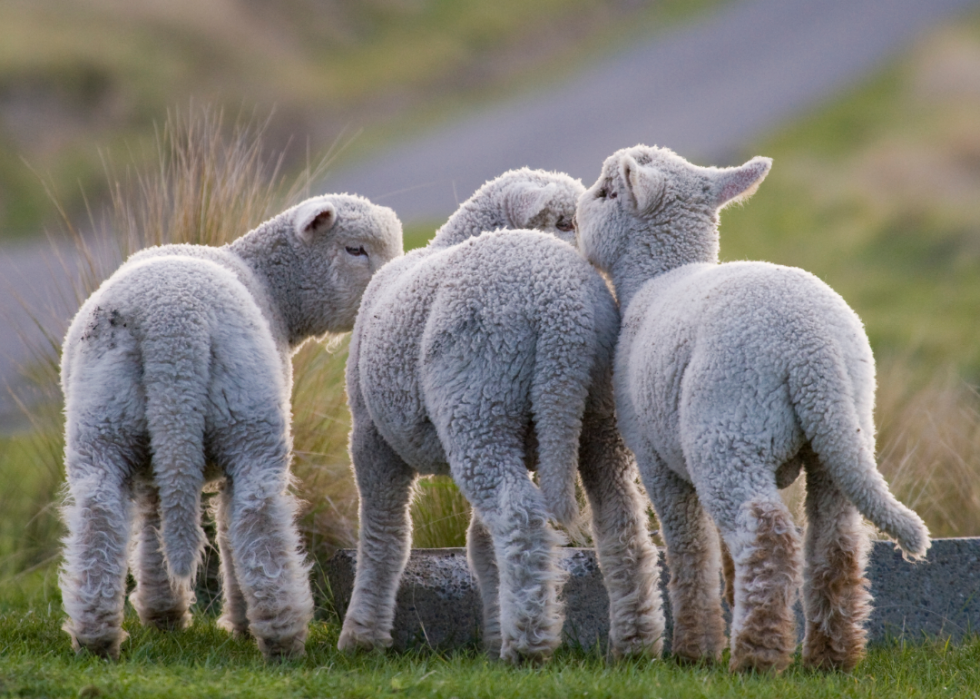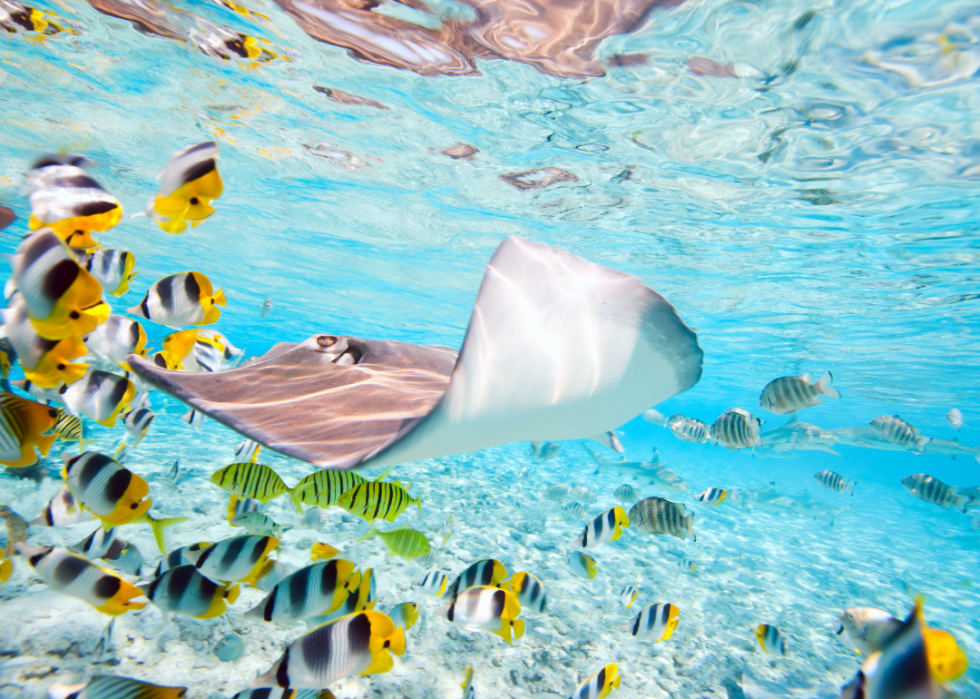that social connection and companionship have many positive benefits. Connecting with others can lower anxiety and depression, increase self-esteem and empathy, improve our immune systems, and even help us regulate our emotions. When we aren't able to connect with others, or when we experience feelings of isolation, our health suffers.
Throughout the course of the coronavirus pandemic, government organizations, news sources, and media outlets have suggested to connect with friends and loved ones. While many of these ideas are good ones and help to a certain degree, nothing can quite replace that feeling of spending in-person time with our nearest and dearest.
In researching the importance and effects of companionship, found that humans weren't the only animals who need these connections. In fact, many species benefit from social interactions. In the following slides, we've compiled a collection of 50 incredible images showcasing companionship in the animal kingdom.
From the strong bonds shared by cheetahs and dogs to the complex family units of wolves and prairie dogs, you're sure to be surprised by how many different species are able to develop close social and emotional connections. And if nothing else, you'll at least be encouraged by the fact that the feelings of isolation and loneliness you may be experiencing are nothing to be ashamed of. In fact, they're biologically hardwired into us.
Read on for photos of companionship across the animal kingdom.
Gelada monkeys
The only grass-eating monkeys in the world, live exclusively in the high mountain meadows of Ethiopia. These baboon-sized creatures form family units of one or two dominant males, two to 10 females, and all their dependent offspring, whom they travel with throughout the day. Pictured are two Gelada monkeys grooming each other.
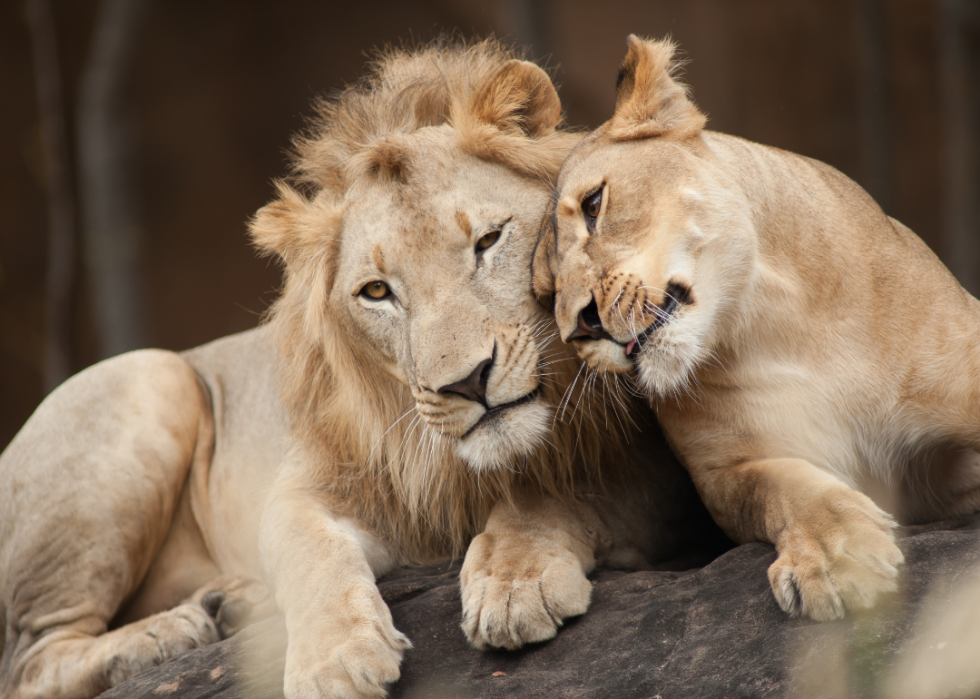
Lion and lioness
Lions are the only wild cats to live in large social groups. These groups, , are made up of related females, their young, and a handful of unrelated males. Notoriously closely knit, prides are completely closed off to outsiders and typically last for a lioness's entire lifetime.
African buffalo, gazelle, and giraffe
All herbivores, African buffalo, gazelles, and giraffes get along swimmingly, and can often be pictured grazing the savannahs side by side. Gazelle and buffalo tend to form large herds of if not , while giraffes move in much smaller groups of .
Chickens, dog, and cat
There seems to be that domesticated animals (dogs, in particular) can form true friendships with other animals, like cats, pigs, foxes, and of course, other dogs. Scientists believe that these interspecies friendships have to do with the way modern dogs are bred, as many of them now retain their juvenile characteristics (including friendliness) well into adulthood.
Horse and dog
discovered that dogs and horses may share a common language of play. Despite the difference in size, overall behavior, and evolutionary paths between the two animals, it seems that they are able to correctly identify and mimic each other's signals. If these findings are indeed true, it would indicate that separate species may actually be able to communicate in ways we've never before understood.
Antelope and monkey
In the animal kingdom, for an abundance of reasons. Larger animals are often seen as stronger, more dominant, and more predatory, while smaller animals come off as weaker, falling lower on the food chain. In this case, the relatively similar size between the young antelope and full-grown monkey allows them to roam the same plains without incident.
Cheetah and dog
Although they may seem like an unlikely pair, are often fast friends. Generally nervous, stressed, and desperate for companionship, cheetahs are calmed by their mellow, loyal canine companions. Zoos across the country, from San Diego to the Bronx Zoo, have long paired cheetahs and dogs from infancy to great success.
Swans
North American mute swans, like the ones pictured above, have a reputation for С����Ƶ monogamous and loyal. Generally, the birds form long-lasting pair bonds, typically (with few exceptions). For this reason, the animals are often seen in North American and European culture as symbols of romantic love.
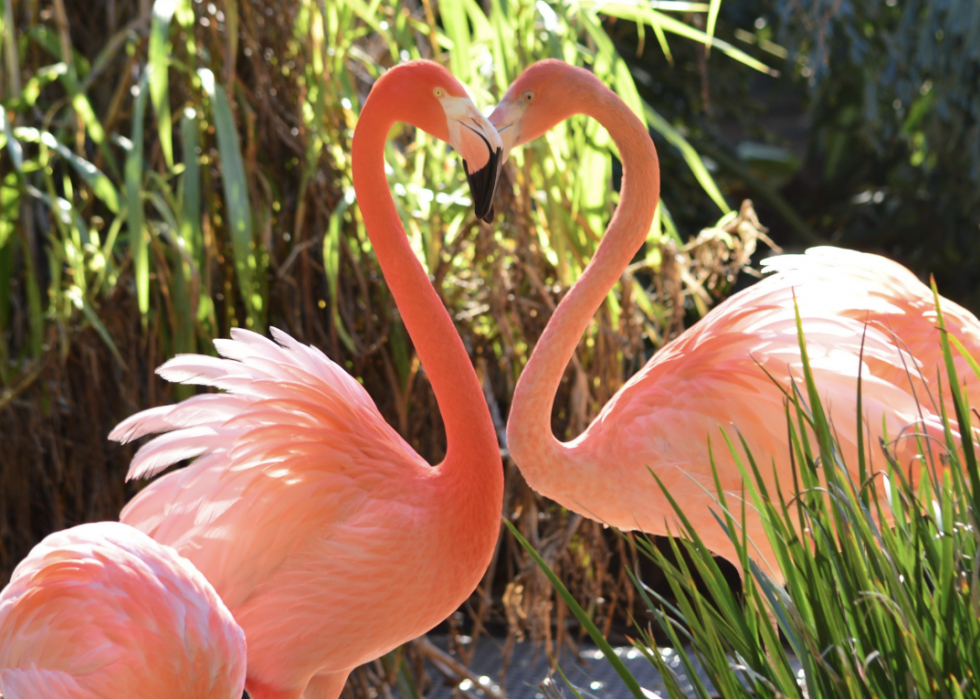
Flamingos
Incredibly social animals, flamingos live in large groups ranging from 50 to several thousand. Unlike other birds, the pink waders do more than just swim and roost with these social groups— that an entire flock will often be engaged in the same activity at the same time, whether that be mating, marching, or preening.
Cow and pig
Thought to have been among the first domesticated animals, pigs have been living alongside humans for some . An incredibly intelligent animal, these domesticated pigs have had centuries to learn how to , especially those that are commonly found on farms (e.g., cows, llamas, and sheep).
Hippos
The , hippos are incredibly aggressive and can be dangerous to humans or any other unsuspecting creatures that wander into their territory. With their own kind, however, they're very social and regularly live in schools composed of 10 to 30 animals. These schools are led by dominant males whose primary role is to keep the rest of the group in check.
Camels
Another social animal, camels who live in the wild form either mixed-gender groups or male-only groups, which are called bachelor herds. The "kissing" behavior that these huge animals often exhibit is : The camels will take turns blowing in each other's faces to say hello.
Otters
Playful and powerful, otters are also . These aquatic mammals click, whistle, chirp, and growl at other members of their raft in order to pass messages and share information. Naturally affectionate, otters spend great lengths of time grooming each other's coats (they have the of any mammal) and playing games.
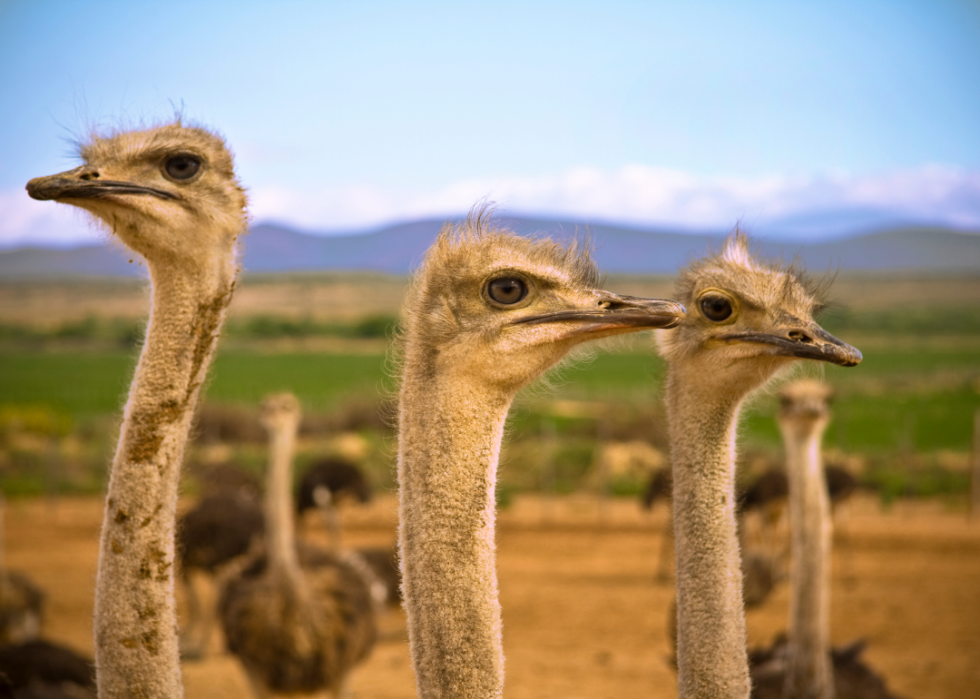
Ostriches
The ostrich's social structure is much than that of many other animals, as it changes throughout the year. During some seasons an ostrich will live alone or with a single companion (either of the opposite gender or the same gender). During other parts of the year, when it's time to mate and lay eggs, ostriches will form larger groups of between five and 50 birds. As the birds are nomadic, these herds will comprise different animals from year to year.
Elephants
Elephants form , living in groups headed by the oldest and strongest females. Scientists believe that the largest land mammals form strong bonds between friends and family. That С����Ƶ said, males and females live separately for most of the year, only joining their segregated herds to mate or find water.
Camels
Like many other animals, mother camels are very protective of their young. In order to ensure a safe and uncontested delivery, a mother will remove herself from her herd to give birth, only bringing her calf back to the group after or so. Then, the duo will communicate with each other through a series of hums that are completely separate from the moans and bellows the rest of the herd will use.
Zebras
Plains and mountain zebras live in family groups, , which are led by a stallion, and include several mares and offspring. Occasionally, these harems will join together to create larger herds, which can be particularly useful in staving off predators. The zebras pictured above are engaging in mutual grooming, an act that helps family members strengthen their bonds.
Giraffes
A is called a tower, an incredibly fitting name for these extremely tall animals. Unlike other species, giraffes don't form close bonds (except for those between a mother and a calf), and members of the tower can, and often do, leave at will. At most, these herds reach 50 members, although it's more typical to see them between 10 and 20.
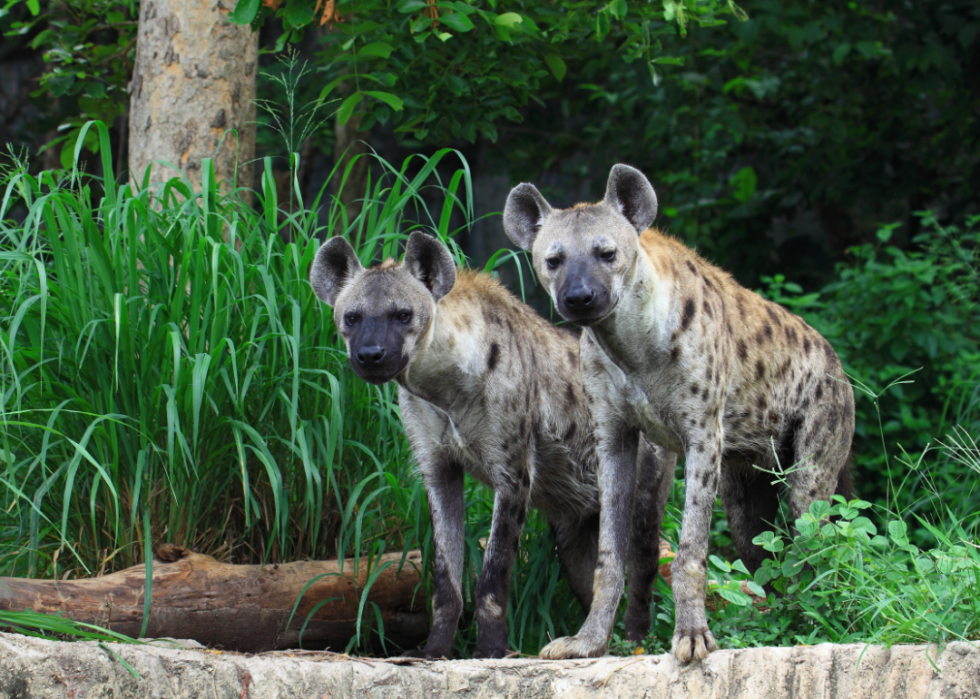
Hyenas
, like the ones pictured above, are the largest members of the hyena species. These African plain animals live in complex, female-dominated clans that can reach up to 100 members. Often depicted as evil and foolish in pop culture, these animals are actually incredibly intelligent and very playful.
Locals of the watering holes
The scarcity of water in the plains and deserts of Africa means that watering holes, like the one pictured above, are points of congregation for a wide variety of species. While elephants, zebras, ostriches, and oryx may not have much to do with each other under ordinary circumstances, their biological need for refreshment brings them together quite frequently. The scenes surrounding these holes are often calm, but things can quickly turn deadly with the arrival of even a single predator, like a lion or cheetah.
Jackals
One of the few mammalian species that , jackals are incredibly territorial and family-minded. Oftentimes, couples and families will create small, loose packs with other direct relatives. Behavior in these packs is highly synchronized, which makes hunting and pursuing larger prey much more feasible.
Animals of the American West
Over a century ago, when feral or free-roaming horses called still covered much of the American West, they formed family units led by both a mare and a stallion. These herds typically include a single stallion over the age of 6, eight mares, and their respective young. There were once an estimated 2 million mustangs roaming North America (primarily in the American West). Today it's thought that only 25,000 of these animals remain in existence.
Lambs
Modern-day sheep are extremely social animals. The gentle species form flocks with four or more others and have been shown to develop close bonds with their fellow sheep. Separation or isolation from the flock can cause and should be avoided at all costs.
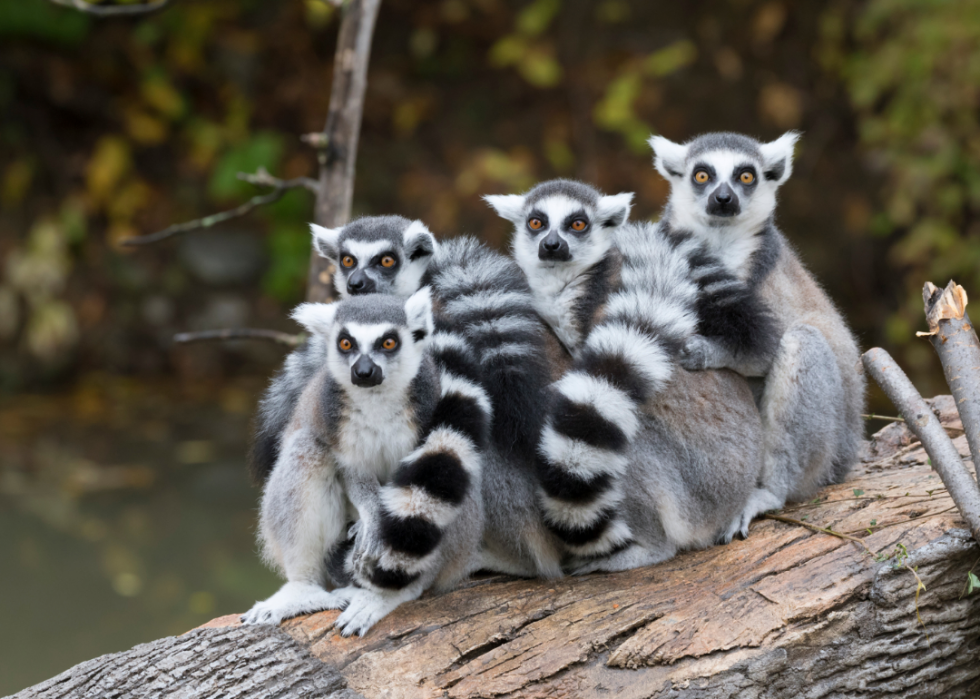
Lemur bunch
Lemurs are one of the few primate species whose social groups are led by . These troops range in size but can include up to 30 animals. demonstrates that troops are much more complex than we originally thought, with different members exhibiting different social behaviors. Much like humans, some are very friendly and have a lot of connections, while others are loners with only one or two close relationships.
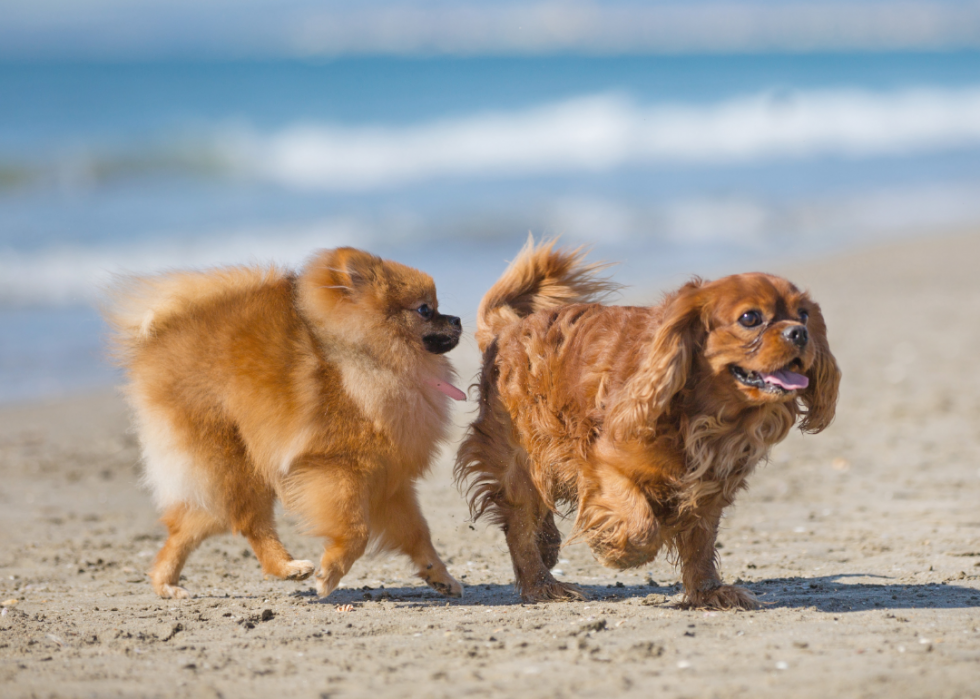
Dogs
Before looking to humans for social interactions and cues (which tend to happen between 5 and 12 weeks of age), dogs look to each other for these things (between ). Incredibly, canines interact with both humans and other dogs in virtually the same ways: body postures, facial expressions, tail and ear positions, raising of hair, vocalizations, and scent.

Red pandas
While generally referred to as the "lesser panda" in deference to the giant pandas we all know and love, red pandas were discovered by scientists first. These elusive creatures live in the Himalayas of Nepal, China, India, Bhutan, and Myanmar (formerly Burma). Normally solitary creatures, adult red pandas form only during their mating or breeding seasons.
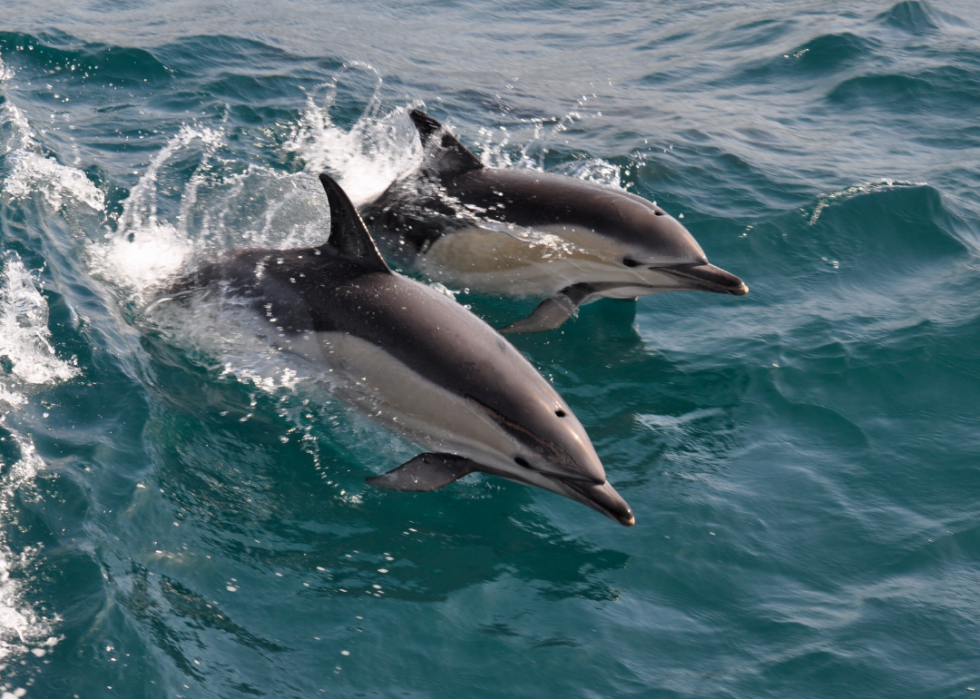
Dolphins
Bottlenose dolphins typically live in fluid social groups . The gender composition of these pods can fluctuate depending on the time of year and function of the pod (for example, nursery pods generally only contain female dolphins and their young). Bonds between adult male and female dolphins are usually short-lived, and tend to be related to breeding, while relationships between same-sex dolphins have been demonstrated to be long-lasting, sometimes up to 20 years.
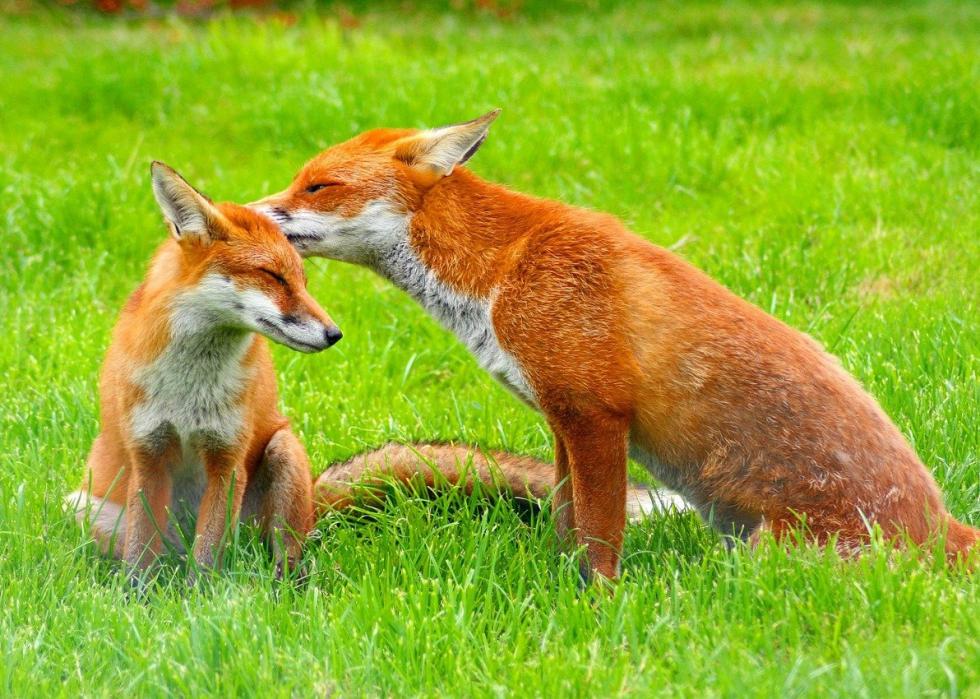
Red foxes
In the wild, red foxes tend to live in , which contain a breeding pair and several of their offspring. Within these family groups, there's a clear but fluctuating hierarchy that determines how much food and social contact each member receives.
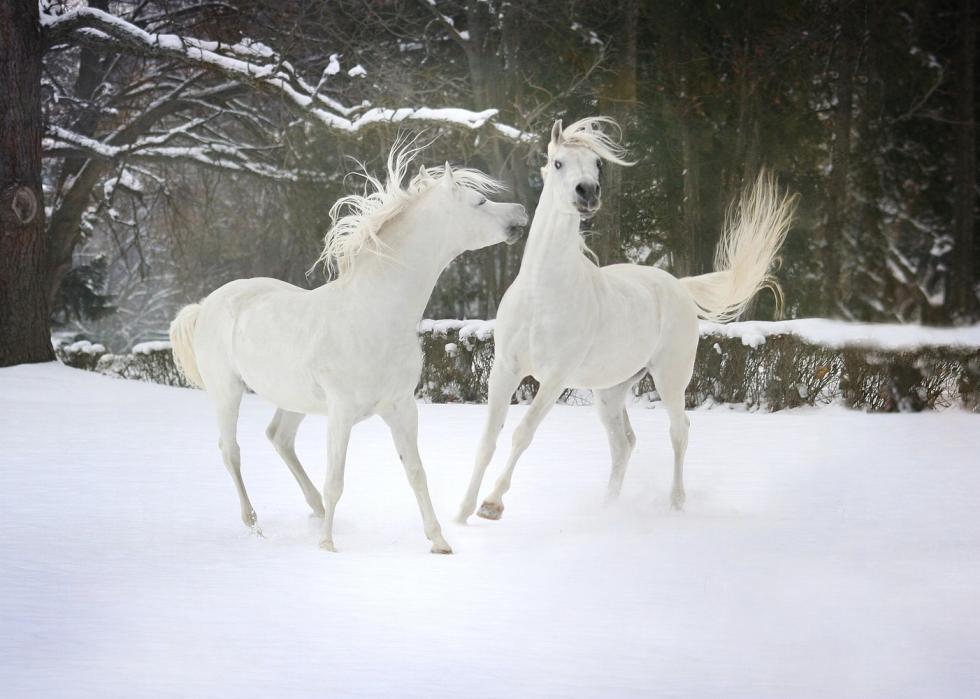
White horses
Unlike Mister Ed, who communicated with a deep voice that sounded suspiciously like Allan Lane, horses communicate with each other through body language. Studies have found that information is primarily passed through the way a horse holds or moves its . Eyes are a secondary method of communication, and the direction a horse looks can indicate where its attention is, relaying important information about food and predators.
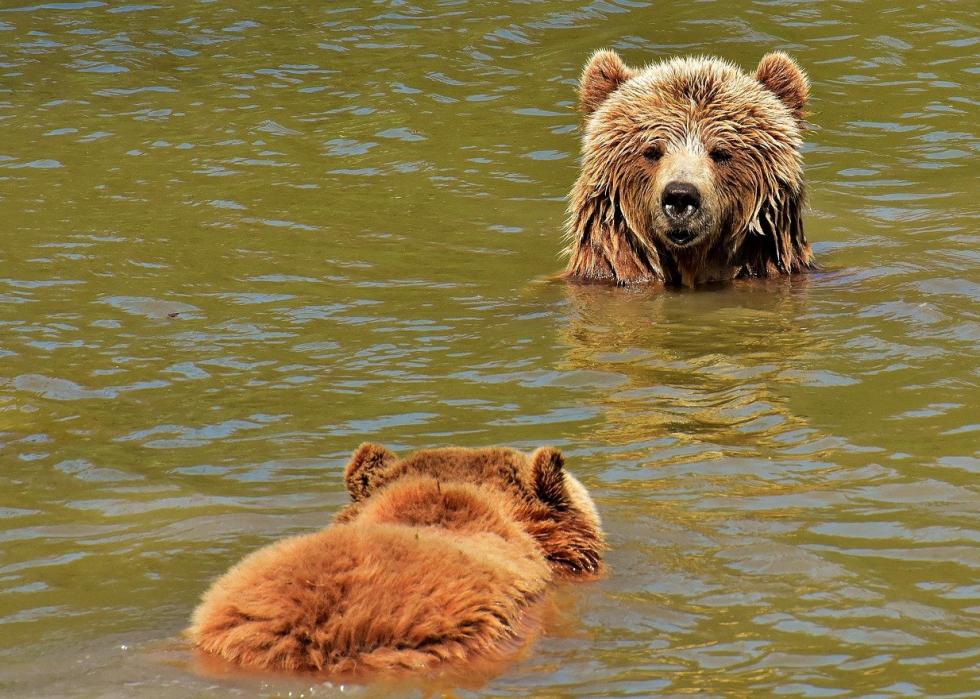
Brown bears
Generally speaking, live solitary lives with the exception of breeding and cub-rearing. Males and females stake out home ranges of 50 to 500 square miles that they mark with their scent. Occasionally, these home ranges overlap, and these boundaries aren't strictly enforced, which can lead to some limited social interaction. Brown bears communicate through vocalizations, movement, and smell.
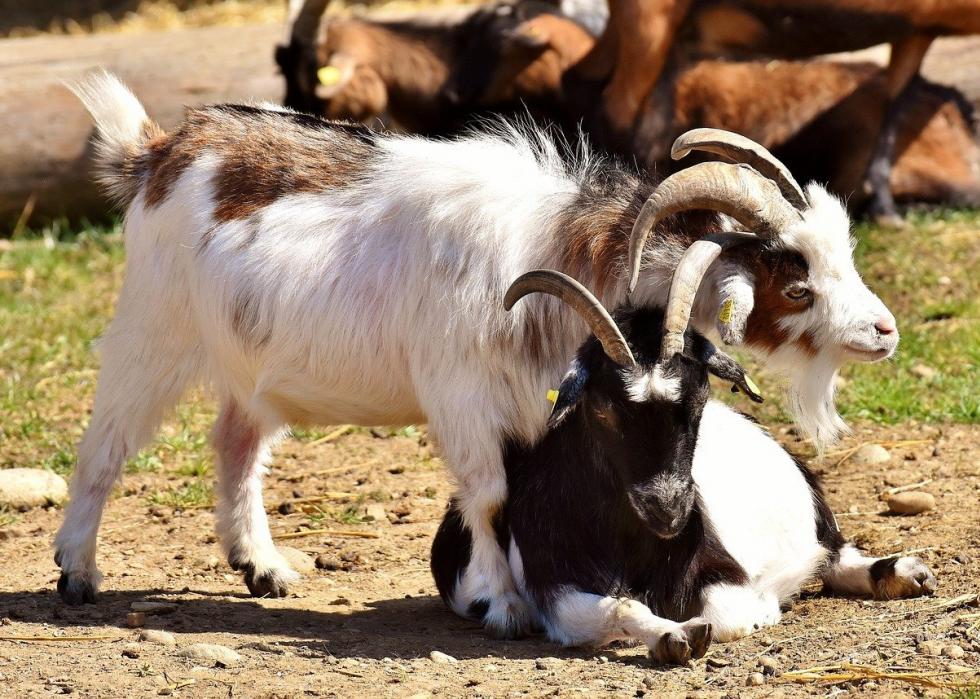
Goats
are similar to sheep in that they require the presence of other goats to remain calm and stress-free. Unlike sheep, but much more like dogs, new research indicates that goats also seek to . Could these horned animals be man's new best friend?
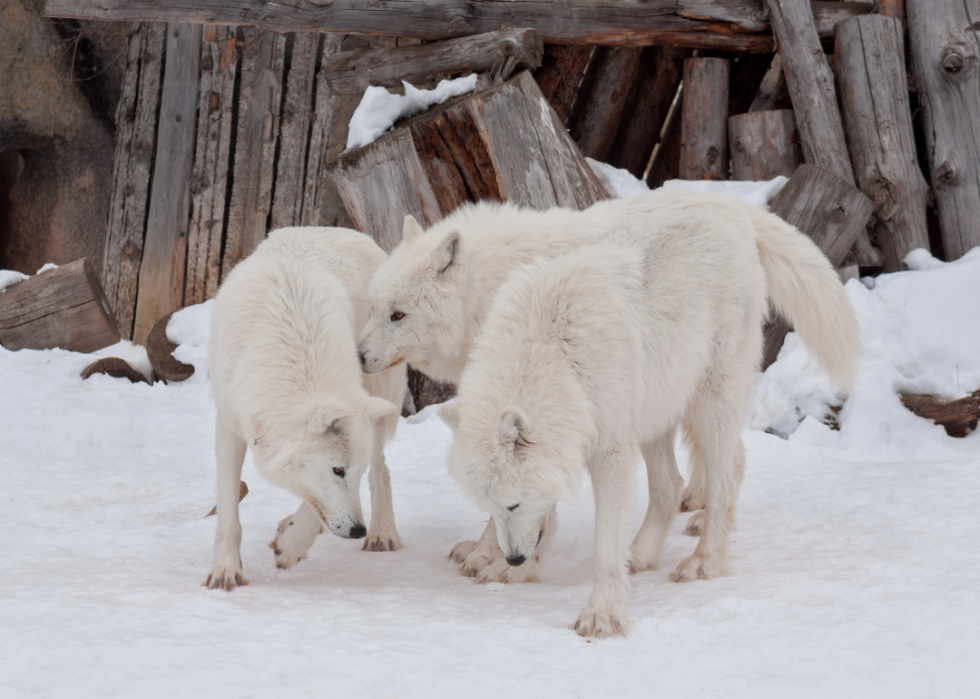
Wolves
through and through, wolves live in packs composed of both nuclear family members and more distant relatives. Helmed by an alpha pair, these groups contain young pups, older wolves who may need special care, and teenage members who have yet to reach sexual maturity. Unlike other animals, wolves have demonstrated the ability to create emotional bonds, caring for their sick and injured and forming close friendships.
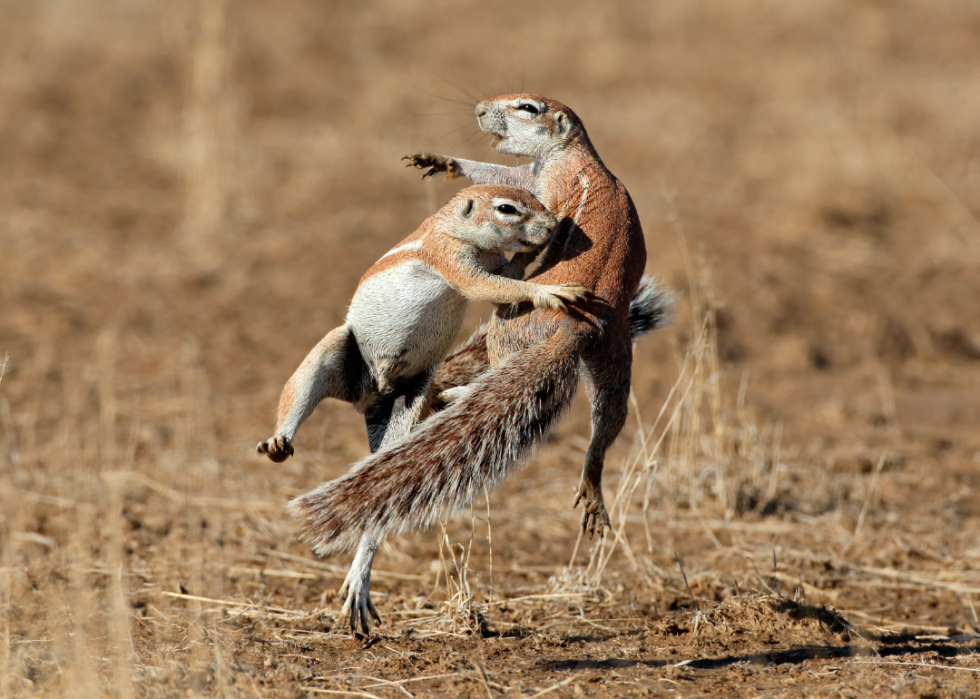
Squirrels
, like the ones pictured above, live in burrows arranged in small colonies. Although they hibernate for several months out of the year, during the warmer months they can often be found wrestling, playing, and feeding together above ground before retreating to their hidden homes.
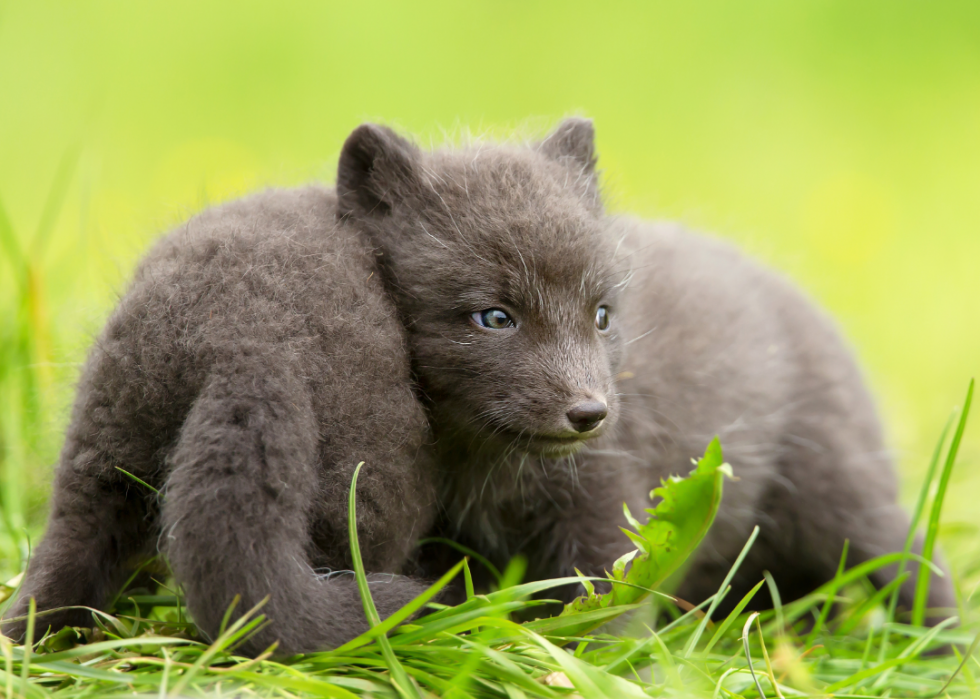
Arctic foxes
Another monogamous animal, typically form mated pairs where both parents care for any resulting offspring. Occasionally, depending on safety and food availability, these foxes will form larger packs where they breed more promiscuously and work as a group to raise pups and ward off threats.

Baby pigs
are different from their domesticated relatives in that they most often live and hunt in groups. Typically, sows and their offspring remain together in groups of two to 30, while mature males are more likely to strike out on their own. Occasionally, these groups can reach up to 100 members, although that size is usually temporary, and the result of a hunt or desperate search for water.
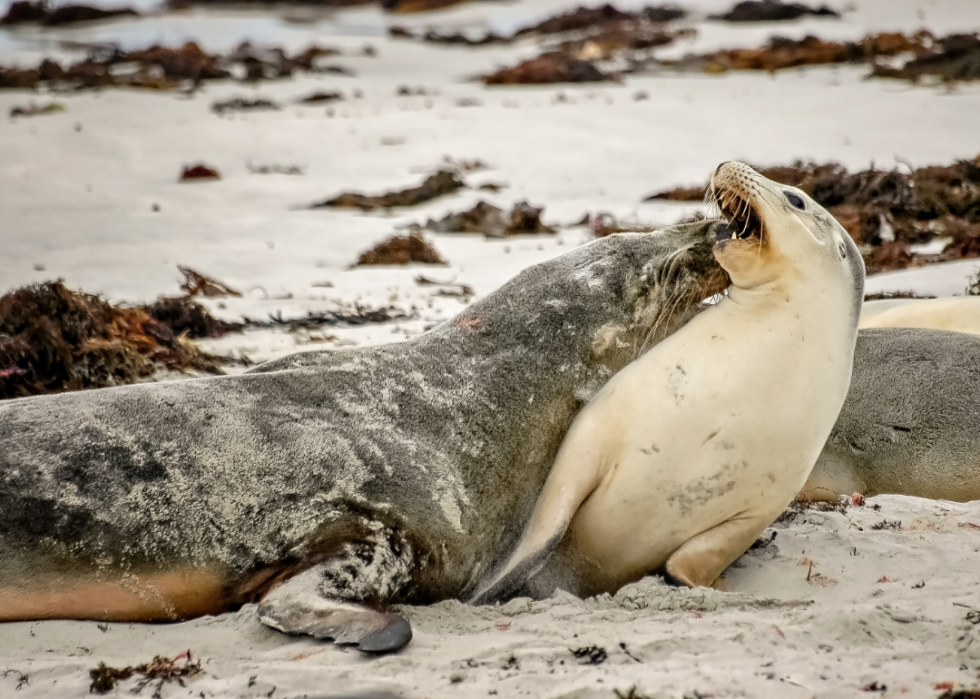
Sea lions
Although we most always see in large groups, there does not appear to be any stable social organization between the animals outside of breeding season. Still, the creatures are extremely gregarious and prefer to swim, float, and rest on land in large packs. Big fans of proximity, you can often spot sea lions lying directly next to or even on top of each other while they rest on the beach or on docks.
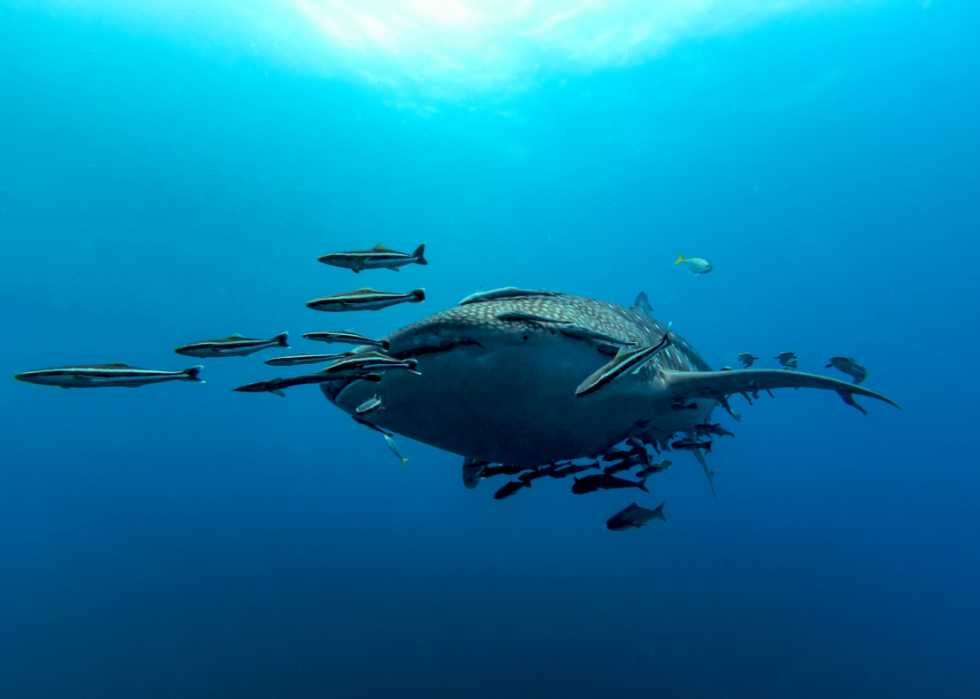
Whale shark
The confusingly named whale shark is a shark, not a whale. The in the ocean, whale sharks are also the most mysterious. Not much is known about these non-predatory animals (they are filter feeders, not hunters), but they are widely considered to be solitary creatures, and are very rarely found living alongside others of their type. Despite their lack of social interactions with other whales, whale sharks can live from 100 to 150 years.
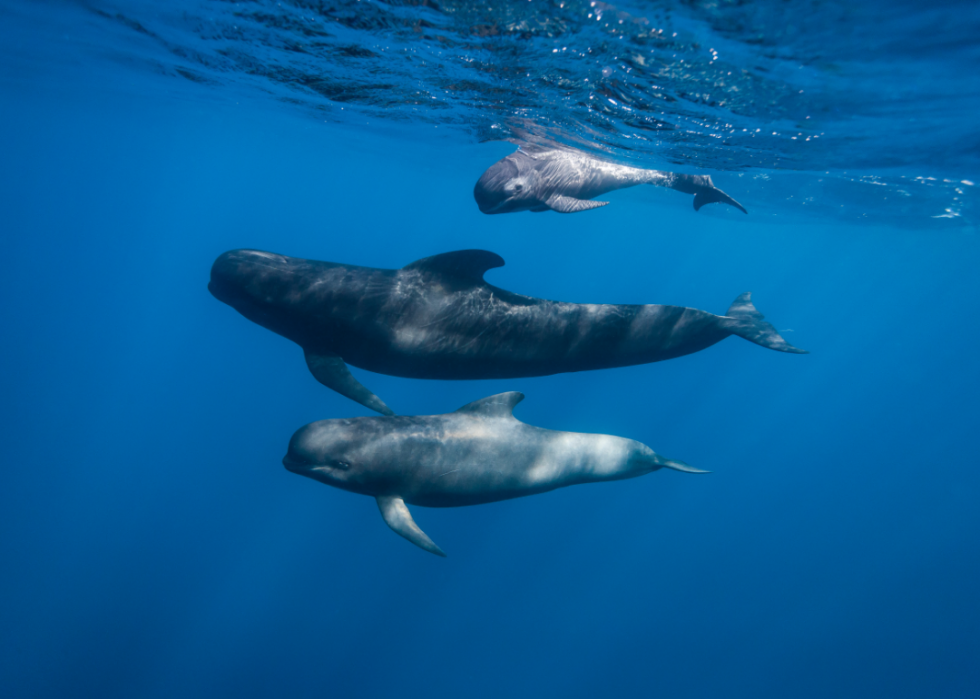
Whales
A study found that whales are capable of having and maintaining social lives similar to humans. Information gathered on 90 different species found that whales form tight-knit social groups and complex relationships, develop regional dialogue, and chat one-on-one with others. Scientists believe that these advanced behaviors are thanks to the relationship between the animals' brain size and overall mass, or encephalization.
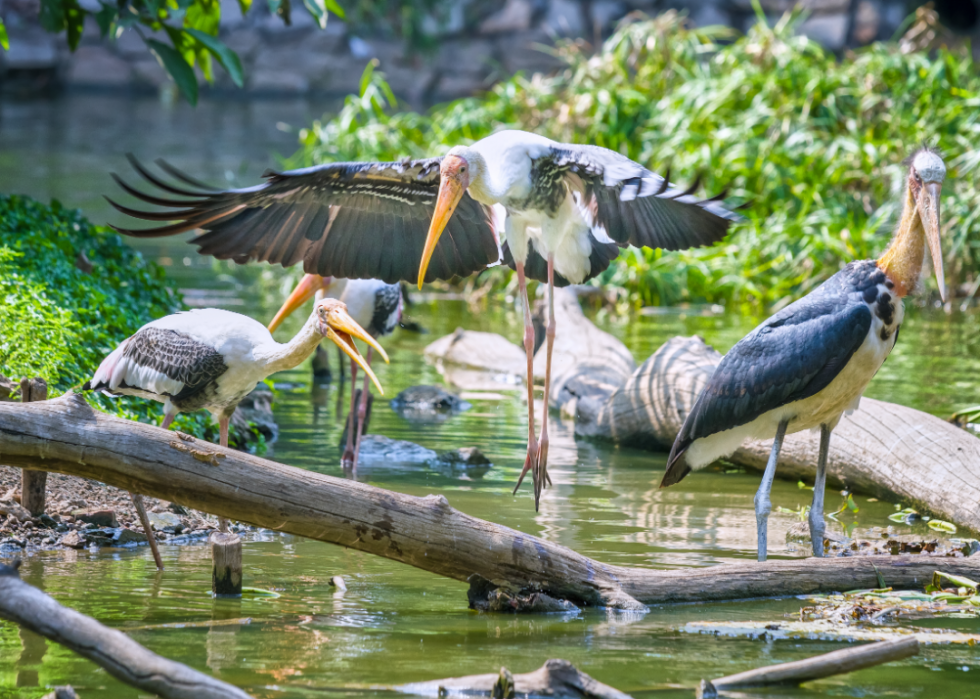
Storks
It's commonly believed that storks mate for life, but, much like the idea that they deliver new babies to expectant couples, . While they do form tight colonies, whom they forage and nest with, storks only mate for a single breeding season.
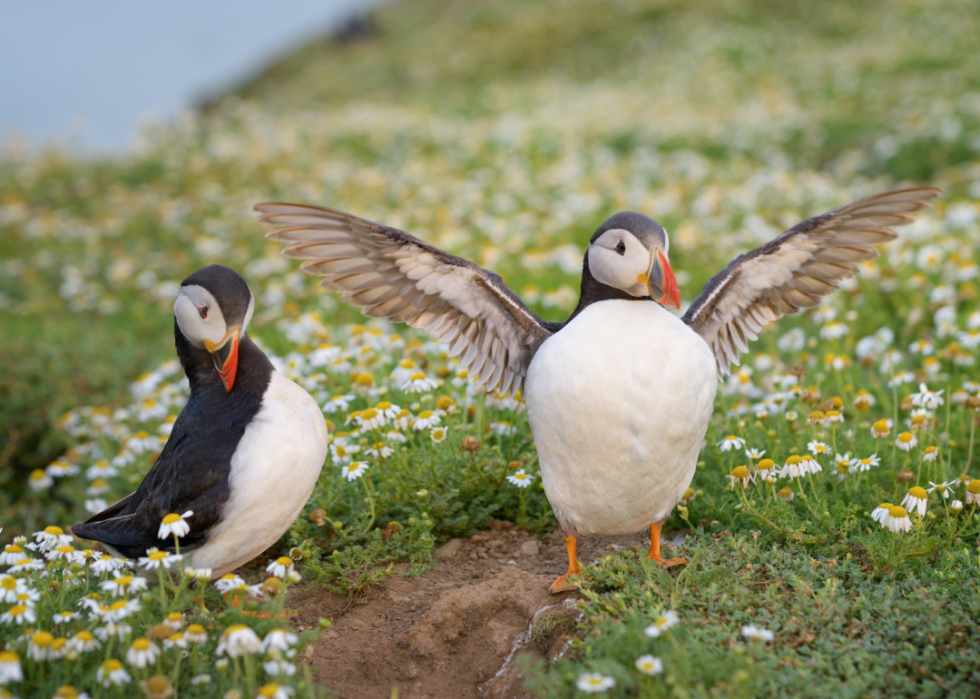
Puffins
live their lives in large colonies, with nests packed closely together. Like any other animal, these stocky birds occasionally get annoyed with each other and will engage in a behaviour called gaping (exhibited above) to express their displeasure. The irked bird will puff up their body, open their wings, gape their beak, and stomp their foot to indicate that they're unhappy with another's behaviour.
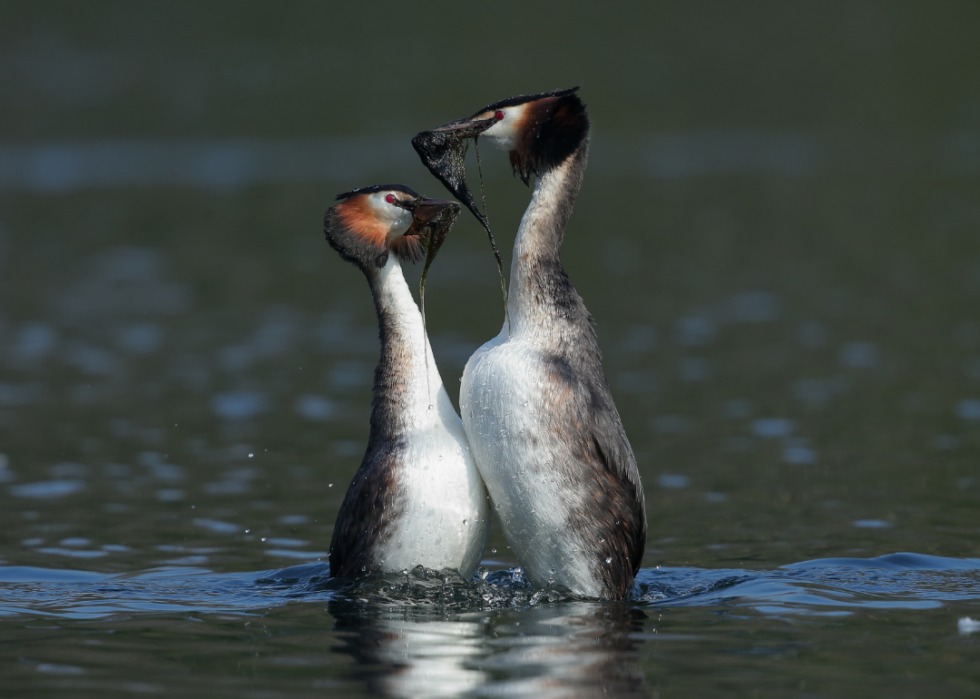
Ducks
Ducks come in , ranging from the African black duck to the Yellow-billed teal, and live on every continent except Antarctica. Given their varied habitats and living conditions, the social arrangements of the various species can be wildly different. Some ducks are very social, living in flocks, while others , living alone or with a single mate.
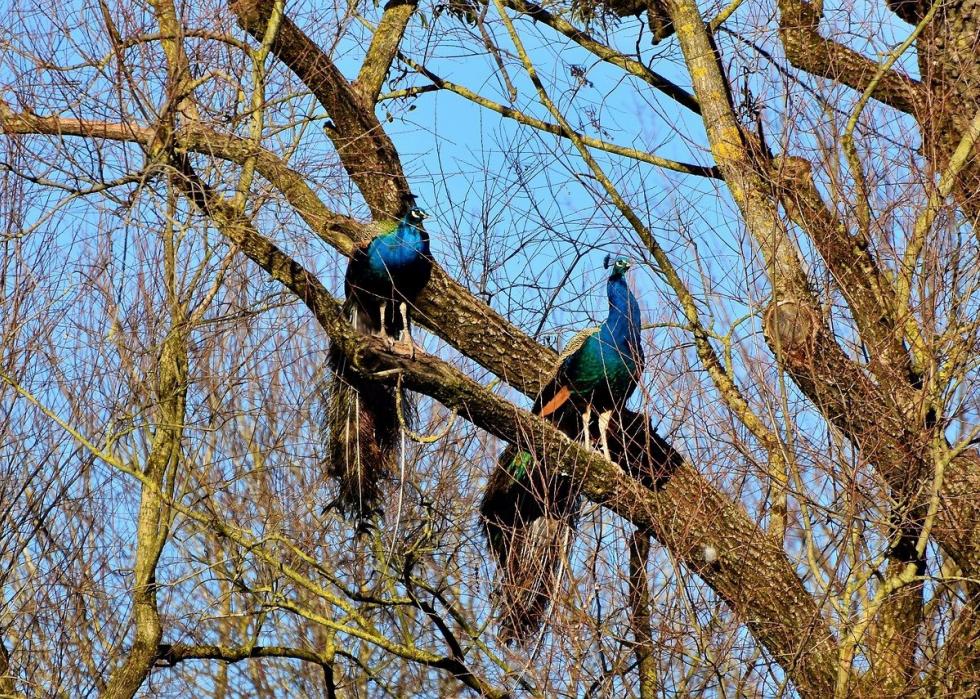
Peacocks
Both incredibly vocal and incredibly social, peacocks and peahens spend large quantities of time together playing, roosting, and flirting. The large, colorful tail feathers male peacocks possess are primarily used for mating and intimidating possible predators. However, the birds can also quiver these feathers in a way that creates inaudible to human ears that communicate various messages to other peacocks.
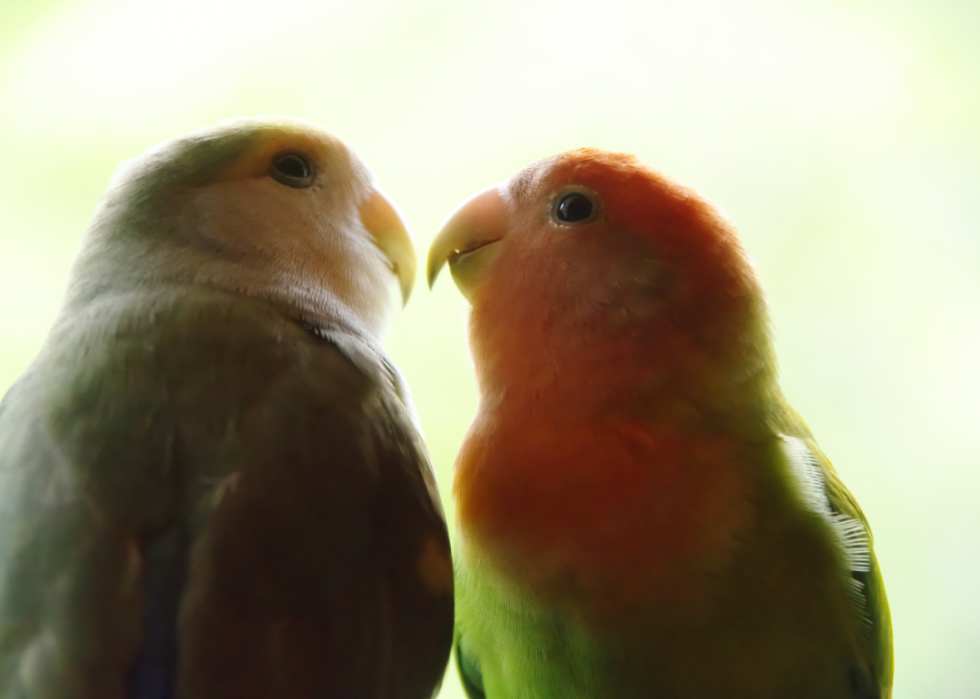
Lovebirds
Lovebirds are small parrots who earn their name thanks to their strong pair bonds. , the bird pairs live in larger flocks, but in captivity are best matched with just one other bird in order to avoid clashes over loyalties. Lovebirds can be towards other species and mismatched mates.

Prairie dogs
Prairie dogs live in complex communities that rival those of humans. The rodents live in massive underground colonies with as many as several thousand other animals. These large neighborhoods are typically broken down into smaller "family" units, headed by an adult male. In order to determine whether or not another prairie dog is a member of their larger network, the rodents will "kiss" or lock teeth with one another, which allows them to recognize the other as friend or foe.

Kangaroo
A group of kangaroos is called —a fitting name for the animals that are often characterized as chaotic. These mobs can contain anywhere from just a few animals to upwards of 100. Often, these marsupials will groom and touch noses with each other in order to strengthen bonds and develop cohesion among the various members.
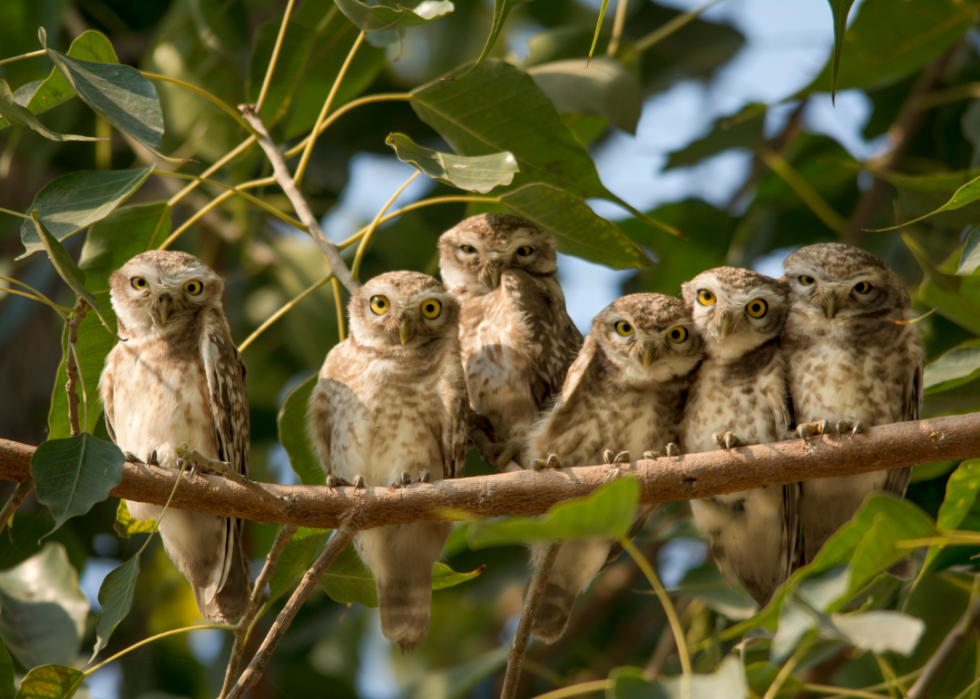
Owls
, most species of owls roost, hunt, and move alone. There are a handful of species that are an exception to this rule, who choose to roost and hunt in flocks for safety and to better pass information. Additionally, during mating season, pairs of owls will spend a considerable amount of time together and will engage in regular preening behaviour in an effort to strengthen bonds.
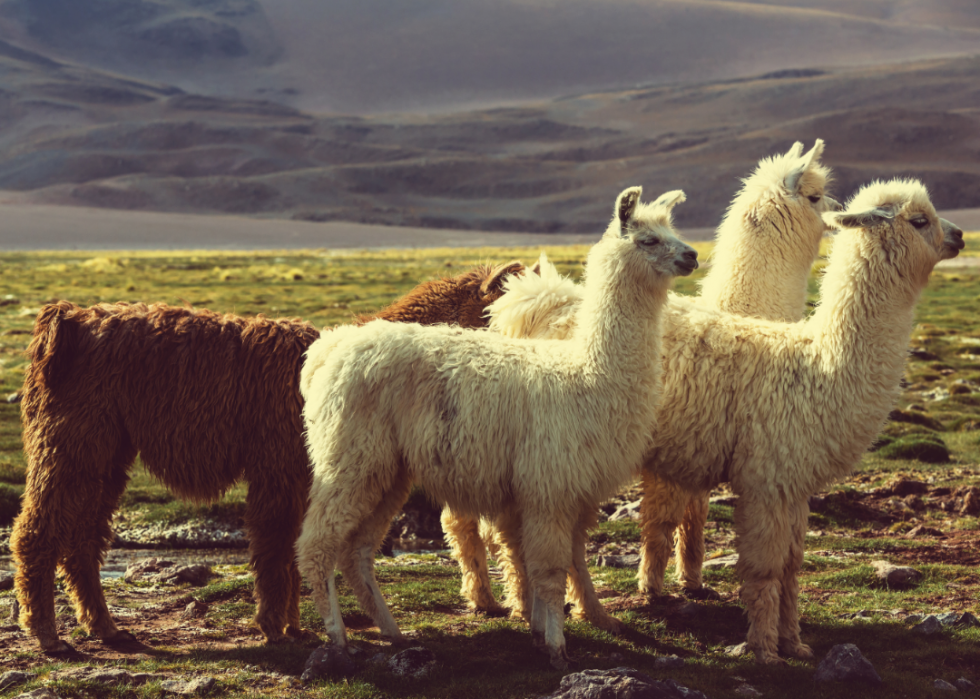
Llamas
A close cousin of the camel, share their relatives' social nature. They thrive in herds, and when separated from their own kind will form bonds with other herd animals (like sheep) and create a sort of adoptive family. The social structure within these herds changes often, with leadership fluctuating between the dominant males.
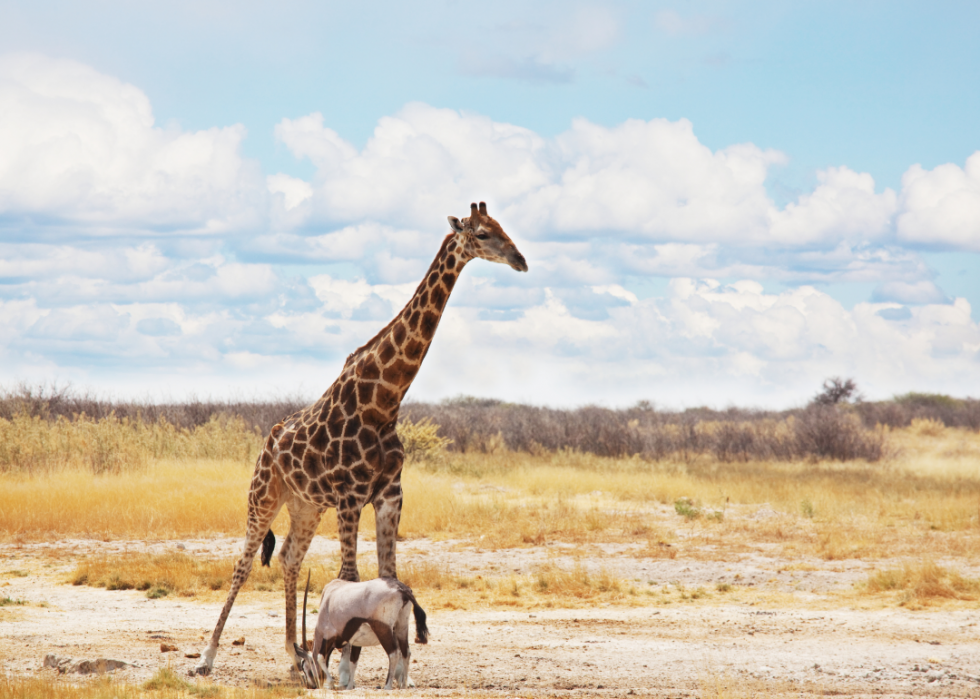
Giraffe and oryx
Many species of are now all but extinct in the wild, but thanks to careful care and breeding are thriving in zoos around the world. A herd animal, oryx are led by a dominant male. Mothers and calves stay together for the first four months of the young one's life until the baby can feed on its own.

Cockatoos
Vocal and social are two words that define . The birds always live in flocks, but the size of the groups change based on varying circumstances. For example, during times of abundance, flocks are rather small topping out at 100 or so. Meanwhile, during leaner times, flocks can reach up to 1,000 in number.
Manta ray
While we may not think we have much in common with this disc-shaped fish, researchers have recently uncovered that may actually be quite human-like, at least when it comes to their social interactions. It turns out, manta rays are particular about their friends. Rather than linking up with the fish closest in proximity to them, manta rays actively seek out certain individuals to socialize with, often regularly meeting with them at specific "cleaning stations."
